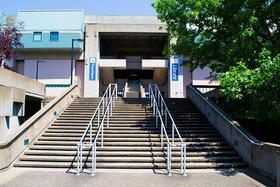- EDIC College, School Specialized in Health Programs with Campuses in Bayamn, Carolina & Caguas
School Highlights
EDIC College served 1,605 students (59% of students were full-time).
The college's student-teacher ratio of 11:1 was lower than the state community college average of 16:1.
Minority enrollment was 100% of the student body (majority Hispanic), which was less than the state average of 99%.
School Overview
EDIC College
(PR) Community College Avg.
Carnegie Classification
Not applicable, not in Carnegie universe (not accredited or nondegree-granting)
Not applicable, not in Carnegie universe (not accredited or nondegree-granting)
Institution Level
Four or more years
Four or more years
Institution Control
Private for-profit
Private not-for-profit
Total Faculty
148 staff
70 staff
Student Body
Total Enrollment
1,605 students
588 students
Student-Teacher Ratio
11:1
16:1
# Full-Time Students
945 students
463 students
# Part-Time Students
660 students
125 students
# Enrollment Undergraduate
236 students
323 students
# Full-Time Undergraduate Students
945 students
408 students
# Full-Time Graduate Students
n/a
167 students
# Part-Time Undergraduate Students
660 students
109 students
# Part-Time Graduate Students
n/a
42 students
% Hispanic
100%
90%
% Black
n/a
7%
% White
n/a
1%
% Unknown races
n/a
2%
Diversity Score
0.00
0.18
College Completion Rate (Students who graduate in less than 4 years)
42%
38%
College Completion Rate (Students who graduate in 4 years or more than 4 years)
2.1%
42%
Average Graduate Earnings (10 Years)
$21,100
$20,600
Tuition and Acceptance Rate
Private State Tuition Fees
$6,660
$6,590
% Students Receiving Some Financial Aid
100%
96%
Median Debt for Graduates
$4,500
$5,000
Median Debt for Dropouts
$3,500
$3,500
Acceptance Rate
94%
77%
SAT Reading (Year 2008)
464
429
SAT Math (Year 2008)
413
415
SAT Writing (Year 2008)
382
382
Source: 2023 (or latest year available) Integrated Postsecondary Education Data System (IPEDS) , School Administrators
Frequently Asked Questions
How much does EDIC College cost?
EDIC College's private state tuition is approximately $6,660.
What is the acceptance rate of EDIC College?
The acceptance rate of EDIC College is 94%, which is higher than the state average of 77%.
Recent Articles

The Rise of Technical and Vocational Training in 2025
Explore the 2025 surge in technical and vocational training—enrollment, policy, costs, and why this path is gaining ground for students and parents.

Stackable Credentials: How Community Colleges Advance Careers
Discover how community colleges use stackable credentials to build career pathways, boost earnings, and enable lifelong learning in 2025.

High-Paying Jobs You Can Get with a Community College Degree
Discover top high-paying careers you can launch in 2025 with a community college (associate) degree and high-growth credentials in tech, healthcare and trades.





